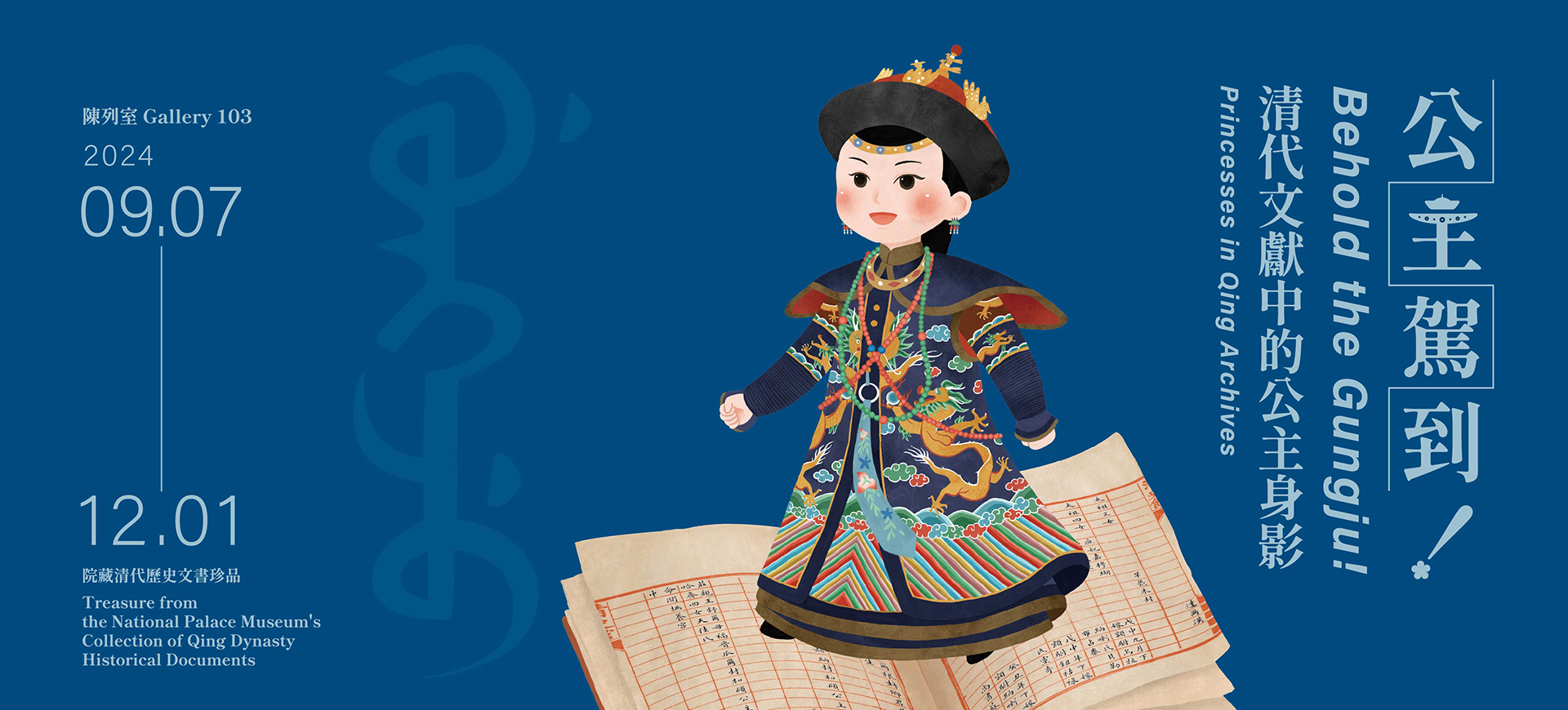Fleeting Royalty
Life’s curtain falls for everyone, but for Qing dynasty princesses, the final bow came startlingly early. With an average lifespan of just 26 years, many of these young women exited the stage in their prime. This grim statistic hints at a perfect storm of factors: primitive medical care, deep-rooted gender bias, and loveless arranged marriages all took their toll on the princesses’ health and happiness.
But their stories didn’t end with their last breath. Through memory, song, and pen, these royal women live on, their legacies growing more colorful and complex with each retelling.
-
Memorial for Princess Zhuangjing of the Second Rank
From Complete Collection of the Yangzheng Study
Written by the Daoguang Emperor
Court manuscript written in black-lined columns, 1822
故殿035827In 1811, Emperor Jiaqing’s fourth daughter, Princess Zhuangjing of the First Rank, passed away at the age of 28. Prince Mianning (the future Emperor Daoguang) wrote about the princess’ life, her relationship with her parents, and her final days in his “Eulogy for My Younger Sister, Princess Zhuangjing of the First Rank.” Both born to Empress Hitara, Prince Mianning felt a deep connection to his sister, who was around the same age as him. In the eulogy, he fondly recalled their harmonious relationship from childhood and poignantly asked, “Why did you leave me behind?” expressing his profound grief.
-
Palace Memorial on the Inspection Results of Princess Huimin of the First Rank's Tomb
Submitted by Chengshu
July 3, 1815
故宮104707In 1815, Emperor Jiaqing’s 9th daughter passed away at the tender age of 5. The next day, the emperor broke the convention by posthumously conferring upon her the title “Princess Huimin of the First Rank” and planned for her to be buried alongside her half-sister, the emperor’s similarly early-deceased fifth daughter. Consequently, he directed Chengshu, the Commander of Taining Town (a town directly administered by the central government), to inspect the “Fifth Princess’ Garden Tomb.” Chengshu reported back to the emperor with a detailed account of the spatial conditions of the princess’ garden tomb. Princess Huimin was then buried at this site; her tomb still exists today within the Zhangge Village, Yi County, Baoding City, Hebei Province, and is a part of the imperial “Western Qing Tombs.”
-
Place Name of “Princess Tomb”
From Imperially Endorsed Gazetteer of Jehol
Compiled by Hešen, Liang Guozhi, et al.
Wuying Palace printed edition, 1781
故殿029371The term “Gongzhu Ling” (Princess Tomb) specifically refers to a village in Damiao Township, Songshan District, Chifeng City, Inner Mongolia, named after the tomb of Emperor Kangxi’s 13th daughter, Princess Wenke of the Second Rank. Originally a part of the Mongolian Onnigud clan’s territory, this became Princess Wenke’s burial site because of her husband, Tsangjin, and she was the reason for the site subsequently becoming famous. Notably, in the Qing dynasty system, the burial grounds of emperors and empresses were called ling (tombs), whereas those of concubines, princes, princesses, and imperial royal nobles were referred to as Yuanqin (garden tombs). The use of ling in “Gongzhu Ling” suggests a local perspective rather than an official terminology.
-
Story of the Qianlong Emperor and His Tenth Daughter Touring the Yuanmingyuan
From Random Notes from the Bamboo Leaf Pavilion
Written by Yao Yuanzhi
Printed edition, 1893
Donated by Mr. Xu Tingyao
贈善001211A story about Emperor Qianlong’s 10th daughter, Princess Hexiao of the First Rank, is recorded in this book. It describes a day when she and her father visited the shopping street by the Garden of Shared Joy in the Garden of Perfect Brightness, with Hešen in company. Upon seeing a red jacket for sale, recalling that the princess often jokingly referred to Hešen as “father-in-law,” Emperor Qianlong suggested that she ask him to pay for the jacket. Hešen quickly bought the jacket for 28 gold pieces and gave it to the princess.
This story portrays Princess Hexiao as having a masculine demeanor, challenging traditional female stereotypes. Moreover, it highlights how society also narrates, perpetuates, and remembers stories of princesses, lending a more vibrant and diverse portrayal of their personas.


